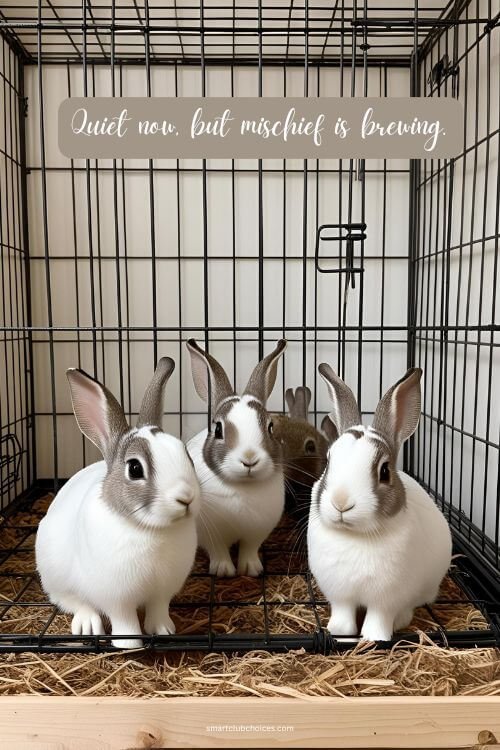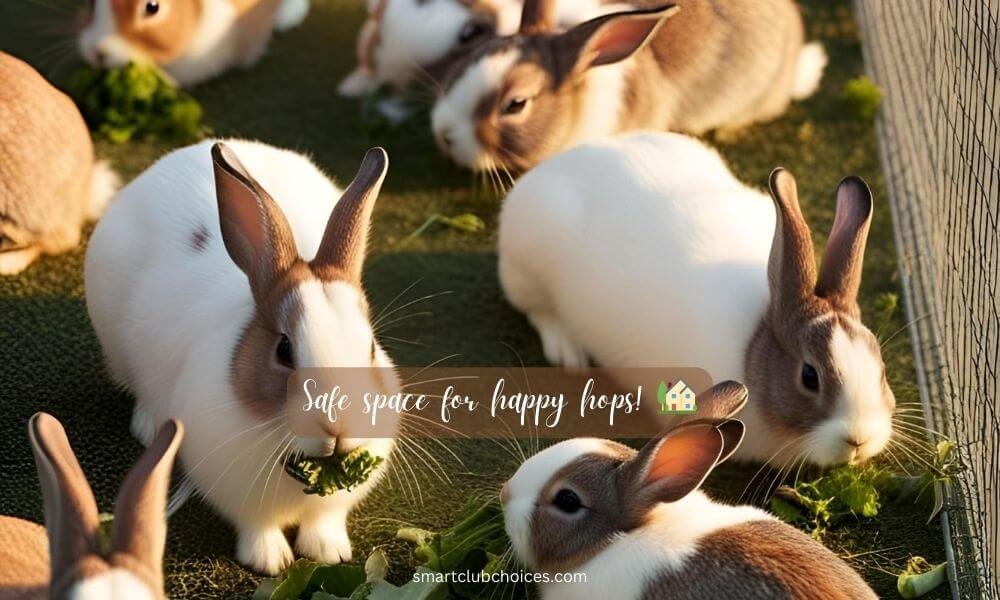How to Bunny-Proof Your Home and Keep Your Rabbit Safe
How to Bunny-Proof Your Home and Keep Your Rabbit Safe
Rabbits are like tiny, fluffy tornadoes. They hop, they chew, they dig, and they have an uncanny ability to find the one thing in your house you don’t want them to destroy.
But let’s be honest—that’s part of their charm. The challenge is keeping your bunny safe while they explore their surroundings (and your baseboards).
Bunny-proofing your home is like preparing for a very cute, very curious toddler.
It requires a mix of creativity, vigilance, and a willingness to sacrifice your favorite cords to the chewing gods.
But don’t worry, we’ve got you covered. In this guide, we’ll walk you through everything you need to know to create a bunny-safe haven. Let’s get started!
Table of Contents
(1) The Great Cord Caper – Protecting Wires and Cables
Why Bunnies Love Cords
To a rabbit, cords are like the ultimate chew toy. They’re the perfect combination of texture and resistance, and let’s face it—they’re everywhere. But chewing on cords isn’t just bad for your electronics; it’s also dangerous for your bunny.
How to Protect Your Cords
- Cord Covers: Use plastic cord covers or split loom tubing to encase your wires. These are like little armor suits for your cables.
- Cable Management: Keep cords off the floor and out of reach by using cable clips or zip ties to secure them to walls or furniture.
- Unplug When Not in Use: If you’re not using a device, unplug it and store the cord safely.
Bunny-Approved Alternatives
Give your bunny plenty of safe chew toys to distract them from your cords. Cardboard tubes, untreated wood blocks, and hay-based toys are all great options.

(2) Furniture Fiascos – Saving Your Stuff
Why Bunnies Love Furniture
Your couch legs, baseboards, and bookshelves are like a buffet for a bunny’s teeth. Chewing helps wear down their constantly growing teeth, but it’s not so great for your furniture.
How to Protect Your Furniture
- Bitter Sprays: Apply a pet-safe bitter spray to your furniture legs and baseboards. The taste will deter your bunny from chewing.
- Barriers: Use baby gates, playpen panels, or clear plastic barriers to block off areas you want to protect.
- Cover It Up: Wrap furniture legs with cardboard, PVC piping, or metal guards to make them less appealing.
Bunny-Approved Alternatives
Provide your bunny with plenty of chewable items, like willow balls, applewood sticks, or cardboard boxes. If they have their own toys, they’ll be less likely to go after yours.
(3) The Great Escape – Securing Your Space
Why Bunnies Love to Explore
Rabbits are naturally curious and love to explore every nook and cranny of your home. But this can lead to trouble if they find their way into unsafe areas, like behind appliances or under furniture.
How to Secure Your Space
- Block Off Small Spaces: Use cardboard, wood, or mesh to block off gaps under furniture, behind appliances, or in tight corners.
- Close Doors: Keep doors to unsafe areas (like bathrooms or laundry rooms) closed at all times.
- Supervise Playtime: Always keep an eye on your bunny when they’re out of their enclosure.
Bunny-Approved Play Areas
Create a designated play area for your bunny with plenty of toys, tunnels, and hiding spots. This will keep them entertained and less likely to wander into trouble.
(4) Toxic Troubles – Keeping Dangerous Items Out of Reach
Why Bunnies Love to Nibble
Rabbits are natural foragers, and they’ll nibble on just about anything—including things that are toxic to them.
Common Household Hazards
- Plants: Many houseplants, like lilies, philodendrons, and pothos, are toxic to rabbits.
- Chemicals: Cleaning products, pesticides, and fertilizers can be harmful if ingested.
- Foods: Chocolate, caffeine, and certain fruits and vegetables (like avocado and rhubarb) are toxic to rabbits.
How to Protect Your Bunny
- Research Plants: Make sure all plants in your home are safe for rabbits. If you’re not sure, keep them out of reach.
- Store Chemicals Safely: Keep cleaning products and other chemicals in locked cabinets or high shelves.
- Bunny-Proof Your Kitchen: Store food in sealed containers and keep countertops clear of anything your bunny might try to nibble on.
Bunny-Approved Greens
Stick to rabbit-safe veggies like romaine lettuce, cilantro, and bell peppers. Always introduce new foods slowly and in small amounts.
(5) The Litter Box Lowdown – Keeping Things Clean
Why Litter Training Matters
A litter-trained bunny is a happy bunny (and a happy human). Not only does it make cleanup easier, but it also helps keep your home smelling fresh.
How to Litter Train Your Bunny
- Choose the Right Box: Use a large, low-sided litter box that’s easy for your bunny to hop into.
- Use the Right Litter: Avoid clumping or scented litters. Stick to paper-based or wood pellet litter.
- Add Hay: Place hay in or near the litter box to encourage your bunny to use it.
How to Keep It Clean
- Scoop Daily: Remove soiled litter and droppings every day.
- Change Weekly: Replace the litter completely once a week and clean the box with a mild, pet-safe cleaner.
- Monitor Habits: Changes in your bunny’s litter box habits can be a sign of health issues, so keep an eye out for anything unusual.

(6) Conclusion: A Safe Bunny is a Happy Bunny
Bunny-proofing your home might seem like a daunting task, but it’s worth it to keep your furry friend safe and happy.
By protecting cords, furniture, and toxic items, securing your space, and setting up a litter box, you can create a bunny-friendly environment that both you and your rabbit will love.
Remember, every bunny is different, so it might take some trial and error to figure out what works best for your home.
But with a little patience and creativity, you’ll have a bunny-proofed space in no time.
So, go ahead and let your bunny hop, explore, and binky to their heart’s content—just make sure they’re doing it safely. After all, a safe bunny is a happy bunny, and a happy bunny makes for a very happy human.








